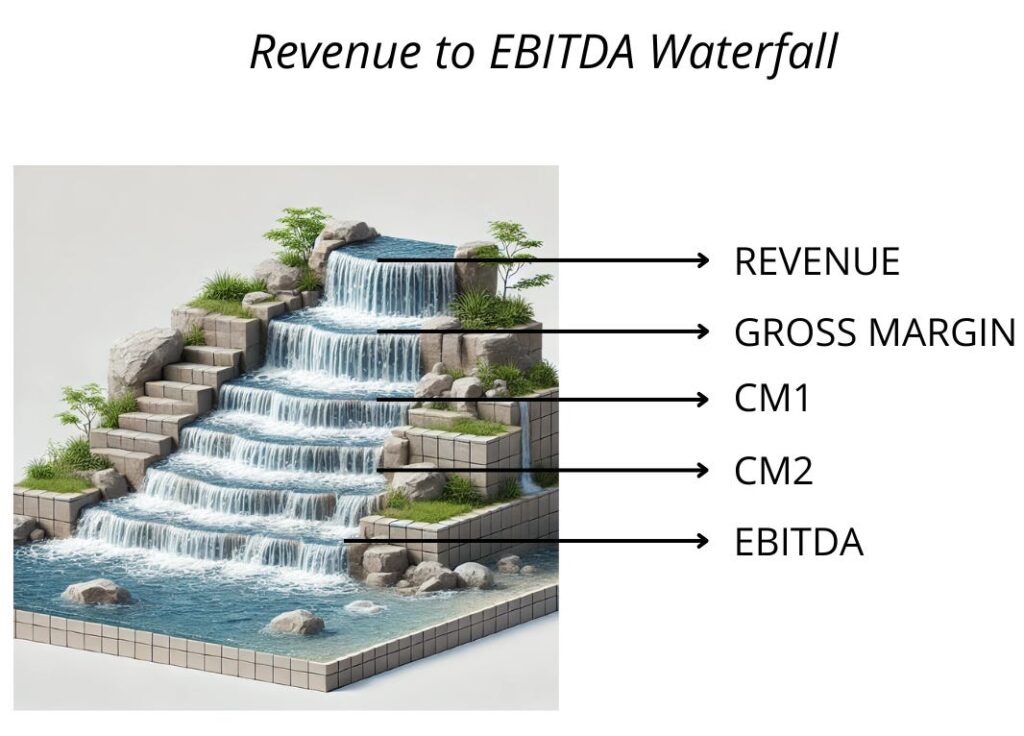Contribution Margin 2 (CM2) is a financial metric used to assess a company’s profitability after accounting for variable costs and direct fixed costs associated with production. It helps businesses understand how much revenue remains to cover indirect fixed costs and generate profit.

CM1, CM2 and CM3.
Net revenue = gross revenue less (or net of) taxes, cancellations and returns. This is effectively what the customer pays you, which you can use for your business needs (taxes have to be kept aside to pay the government)
CM1 (Contribution Margin 1): Net Revenue minus all costs associated with manufacturing and delivering the product. This includes all direct, variable, and attributable costs like warehouse rental and staff costs. Also referred to as ‘gross margin’.
CM2 (Contribution Margin 2): CM1 minus direct marketing costs, such as performance marketing expenses. Essentially, CM2 = Net Revenue minus all variable costs involved in customer acquisition, and product creation and delivery.
CM3 (Contribution Margin 3): Less common than CM2, but effectively CM2 minus brand marketing costs. CM3 less all fixed costs = EBITDA.
Formula for CM2
CM2=Revenue−(Variable Costs+Direct Fixed Costs)
OR
CM2=CM1−Direct Fixed Costs\{CM2} = {CM1} – {Direct Fixed Costs}CM2=CM1−Direct Fixed Costs
Where:
- CM1 (Contribution Margin 1) = Revenue – Variable Costs
- Direct Fixed Costs = Fixed costs directly attributable to a product, service, or division (e.g., factory rent for a specific product line)
Why is CM2 Important?
- Evaluates Product/Service Profitability: CM2 helps in determining if a specific product, service, or business segment is profitable after direct fixed costs.
- Aids Pricing Decisions: A low or negative CM2 indicates that pricing may need adjustment.
- Supports Cost Control: Identifies high-cost areas where efficiency improvements can increase profitability.
- Helps in Break-even Analysis: CM2 contributes to understanding the break-even point after covering both variable and direct fixed costs.
Example Calculation
Let’s say a company sells a product for ₹1,000 per unit. The variable cost per unit is ₹400, and the direct fixed cost per unit is ₹200.
- CM1 = ₹1,000 – ₹400 = ₹600
- CM2 = ₹600 – ₹200 = ₹400
This means the company earns ₹400 per unit after covering variable and direct fixed costs.
CM2 vs CM1 vs CM3
- CM1 (Gross Contribution Margin): Only considers variable costs.
- CM2 (Net Contribution Margin): Subtracts direct fixed costs.
- CM3 (Operating Contribution Margin): Further accounts for indirect fixed costs like administration expenses.
FAQs
How to Improve CM2?




What are direct fixed costs in CM2?
Direct fixed costs are fixed expenses directly associated with a specific product, service, or business unit. Examples include:
- Factory rent for a specific product line.
- Salaries of employees working on a particular project.
- Equipment maintenance costs for a production unit.